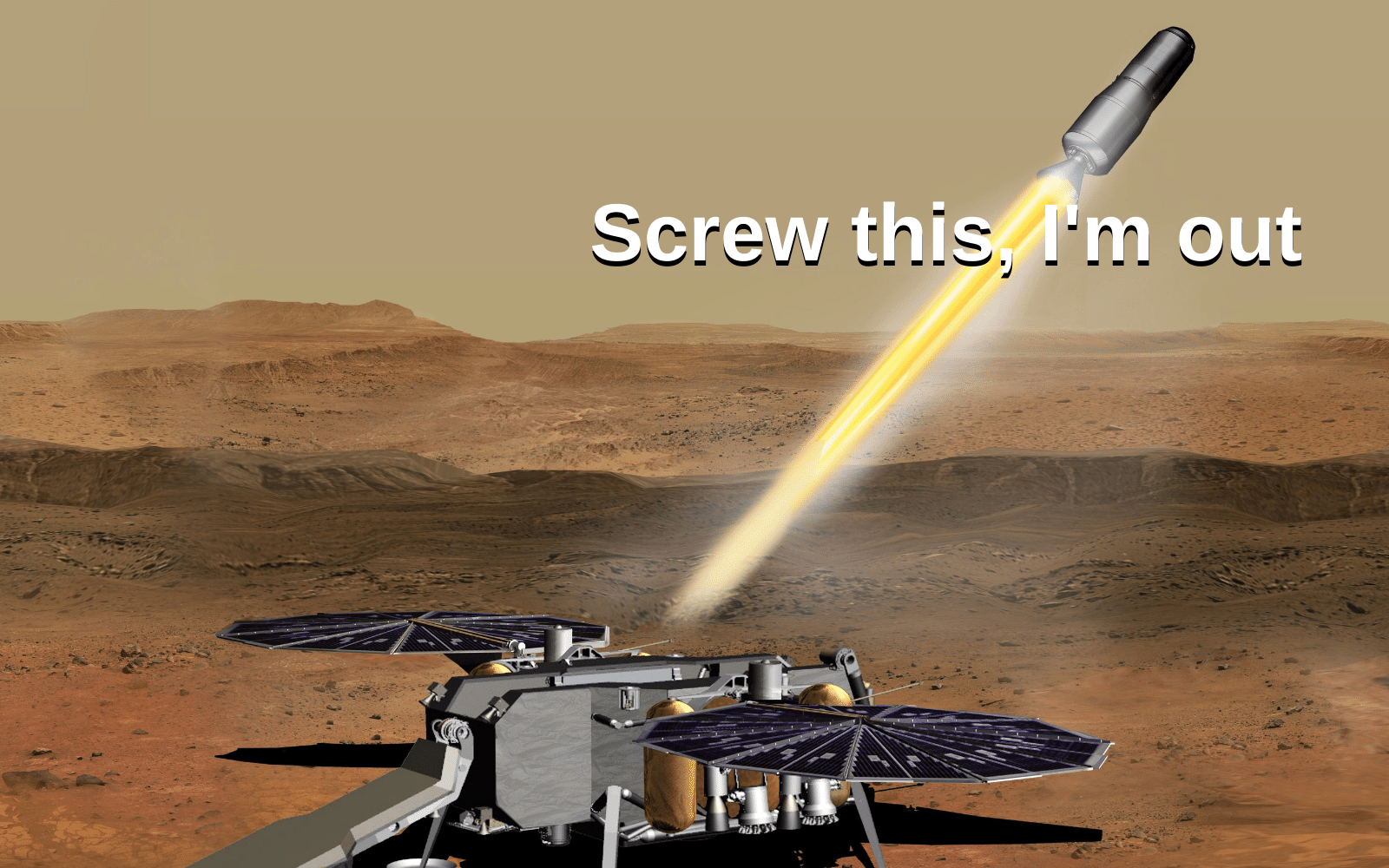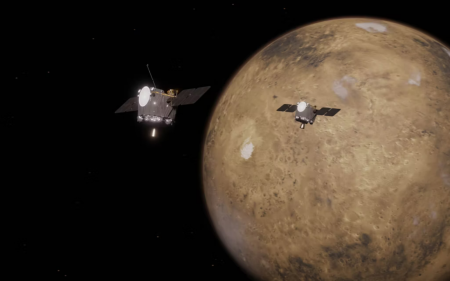If we ever want to send human beings to Mars, we have to be sure we’ll get them back. Unless we’re trying to get rid of them, but that’s the darkest timeline. Since we still live in the light, it’s time to learn about the Mars Ascent Vehicle or MAV.
This is a small rocket that will, according to a recent NASA announcement, be built by Lockheed Martin. This rocket’s job is to go to Mars, and then come back with rocks. See, Jeff? SpaceX doesn’t get all the attention. You just have to be able to deliver a working rocket engine. Then NASA might also give you a contract with a possible value of $194 million over six years.
What a MAV-erick idea

The MAV is a lightweight rocket that will be delivered to the Martian surface. Once there, it’ll hook up with the Perseverance rover for some hot robot-on-robot action. Once Perseverance has made its deposit, of soil, rock, and atmospheric samples, the MAV will blast off from the Mars surface.
Which, we have to tell you, is an awfully big deal. It’s one thing to send people to the lunar surface and have them pilot their way back. It’s another entirely to send something to Mars and get something in return that isn’t a Decepticon.
It’s a… complicated process, involving NASA, the ESA (European Space Agency), and Lockheed Martin Space. NASA will create a Sample Retrieval Lander, which will carry Lockheed’s Mars Ascent Vehicle to the Martian surface near Jezero Crater. The samples collected by Perseverance will be loaded into the MAV, which will then launch into orbit around Mars. The concept is a little like a Scud missile, except not hitting anything is an intended effect and not an unexpected design flaw.
Once there, it’ll have to be captured by an ESA-made Earth Return Orbiter craft, which plays host to NASA’s Capture, Containment, and Return System payload. As you can tell by the capital letters, these are all important bits of equipment. The ERO craft will send the samples back to Earth, making history. Or one or more components might fail miserably and result in Martian wreckage or derelict crafts drifting around the solar system. That’s the emo timeline. But emo’s out of fashion, so it’ll probably all be okay.



